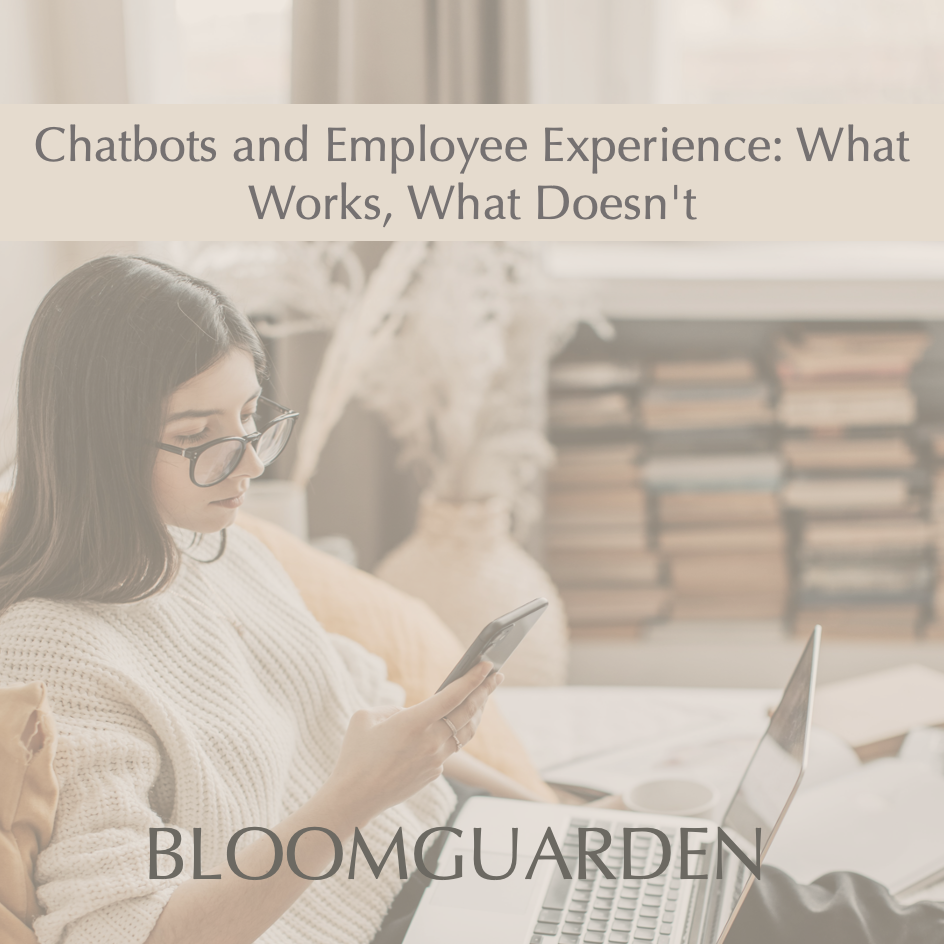Chatbots and Employee Experience: What Works, What Doesn't
Chatbots and Employee Experience: What Works, What Doesn't
Chatbots have quietly become one of the most common tools in the modern HR tech stack—used for everything from answering PTO questions to guiding onboarding. But are they really improving the employee experience?
The answer: it depends.
Used well, chatbots can reduce HR ticket volume, boost responsiveness, and support 24/7 service for distributed teams. Used poorly, they frustrate employees, misroute sensitive issues, and add layers of confusion to already complex processes.
This article explores where chatbots succeed, where they fall short, and how HR leaders can deploy them as part of a human-centered experience—not a replacement for real support.
Why Chatbots Entered the HR Conversation
The rise of remote and hybrid work, combined with lean HR teams and rising employee expectations, created the perfect environment for automation. HR chatbots gained popularity because they promised:
· Faster access to information
· Lower ticket volume for HR teams
· Standardized responses to FAQs
· 24/7 availability across time zones
According to Gartner, nearly 50% of large employers now use some form of conversational AI in HR—though satisfaction with outcomes varies widely.
Where Chatbots Work Well
1. High-Volume, Low-Complexity Questions
Think: “How many vacation days do I have left?” or “What’s the policy for parental leave?”
Chatbots shine when the question is straightforward and the answer lives in a clear knowledge base. This frees up HR for more strategic or sensitive work.
2. New Hire Onboarding Support
Structured, repetitive processes like document submission, benefits selection reminders, or IT ticket routing are perfect for chatbot workflows.
3. Benefits Navigation During Open Enrollment
Employees often have basic, plan-specific questions. Chatbots can offer instant links, definitions, and calculators without clogging HR inboxes.
4. Real-Time Routing to Live Support
Some chatbots are great triage tools—quickly escalating complex or emotional issues to a human before they get worse.
Where Chatbots Fail (and Frustrate)
1. Context-Sensitive or Emotionally Charged Issues
Chatbots should never attempt to resolve issues involving harassment, conflict, terminations, or performance feedback. These require human judgment and empathy.
2. Poorly Maintained Knowledge Bases
If the chatbot is pulling outdated or generic responses, it erodes trust. Employees will bypass it—and complain about it.
3. Dead Ends and Loops
There’s nothing more frustrating than a chatbot that can’t understand the question and offers no path to live help. Avoid systems without escalation logic.
4. “Faux” Conversation That Feels Fake
Over-personalized chatbots (“Hi Jamie! 😊 I see you’re curious about your benefits!”) often backfire. Most employees prefer speed and clarity to forced cheerfulness.
What Employees Actually Want from Chatbots
· Accuracy: Give the right answer or link—fast.
· Clarity: Skip the small talk and don’t guess.
· Speed: If escalation is needed, don’t delay.
· Transparency: Be clear when a bot is answering vs. a human.
· Privacy: Ensure that sensitive topics are routed properly and confidentially.
Best Practices for HR Leaders
· Start small: Pilot chatbots with benefits FAQs or onboarding reminders before scaling.
· Maintain a live knowledge base: Update it as frequently as you update your handbook or policies.
· Build in handoffs: Always offer a “talk to someone” option, especially after two failed attempts.
· Train employees: Show them what the chatbot is for—and what it’s not.
· Measure usefulness, not just usage: Track satisfaction ratings, escalation rates, and successful resolution counts.
Conclusion
Chatbots are a useful tool—but they’re not a strategy. When deployed thoughtfully, they reduce friction and improve access. When overused or misconfigured, they become just another layer of bureaucracy.
For mid-market companies and PE-backed firms, the right chatbot strategy isn’t about replacing HR—it’s about freeing HR to be more human where it matters most.
References
· Gartner. (2024). Predicts 2024: AI’s Impact on the Employee Experience – includes data on conversational AI adoption by large employers.
· SHRM. (2023). When Automation Backfires: How Rushed AI Implementation Can Hurt – covering limitations and pitfalls of poorly implemented chatbots.
· Deloitte. (2024). Transform HR with Intelligent Chatbots – Insight into how chatbots enhance employee experience and productivity when deployed thoughtfully.
· Harvard Business Review. (2023). Creating Customer Service Bots That People Don’t Hate – real-world research on bot interaction satisfaction and best design principles.
· HBR. (2025). Fixing Chatbots Requires Psychology, Not Technology – emphasizes the importance of designing bots with human behavior in mind.
How BloomGuarden Can Help
At BloomGuarden, we help HR teams integrate automation tools like chatbots without compromising employee experience. Whether you’re exploring FAQs, onboarding flows, or escalation paths, our frameworks keep humans at the center—and the bots working where they should.
Need help evaluating a chatbot vendor or redesigning your HR comms flow? Let’s talk. contact@bloomguarden.com
